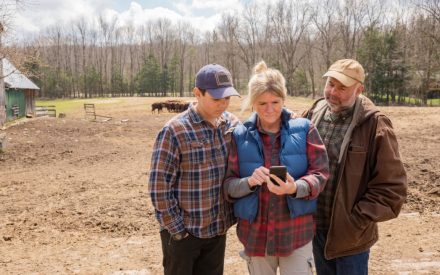Many commodity farms face a fork in the road at some point. The status of their physical infrastructure, labor availability, size, age, or other factors create a time where they must decide to invest in economies of scale or use their resources they have in a more value-added way. Those who invest in economies of scale are hoping to drive down fixed costs by spreading them across more acres and/or more animals. Those taking the value-added route are hoping to increase the profit margin per unit so that they can sell less but make just as much profit or more.
The key to success in either model is management. However, the management skills needed to be successful are different. The commodity farm needs to continuously be more efficient at production and cost containment while adding in a healthy dose of commodity marketing. The value-added manager wants to be efficient too, but their driving need is to understand what the problems and needs are of their customers, provide a differentiated product or service that solves that problem or satisfies that need, and know how to market that differentiation.
Whether it is a commodity farm that wants to transition to a value-added business or an entrepreneur who wants to start a new value-added agricultural business, both have a need to figure out a business model that will work. What should they produce? Who is their target market? How should they gain customers? What are the problems or needs people have? What value are customers looking for? How can you efficiently deliver on that value better than others? And many more questions.
Starting a new value-added venture is risky business. Gustafson (2020) states that “according to the U.S. Bureau of Labor Statistics, about 20% of U.S. small businesses fail within the first year. By the end of their fifth year, roughly 50% have faltered. After 10 years, only around a third of businesses have survived.” So, the question is: How can one improve their probability of developing a business model that will be successful? Or, while not as fun: How can one fail cheaply?!
Tools and Resources
There are many tools, resources, and processes that have been created to help entrepreneurs be more successful. Two of them are the “Business Model Canvas” and the “Lean Start-up” process. The article titled “Creating your $50/cwt. Mona Lisa – Diversifying Your Farm Business Enterprise” explains how these two tools can be used together to improve your chances of success, or, if the idea is just ahead of its time, to fail cheaply.
The following worksheets and videos will help you get started using the Business Model Canvas and Lean Start-up process to quickly and cheaply test out the potential of your farm-business enterprise idea.
Getting Started with Business Model Canvas: A worksheet of simple questions to ask yourself when beginning the process of developing a business model that works.
Start-up Questionnaire: Dive deeper into the key questions for a successful business and begin to develop your assumptions for the Business Model Canvas.
Pro Forma Budget: At some point, one must do a deep dive into the numbers. What are the revenues, costs, and expected profits? The Pro Forma Budget spreadsheet is a format to begin answering the financial questions. Pro forma budgets are used to create financial projections and scenario planning.
Videos that explain the Business Model Canvas and the Lean Start-up Process
References:
- Bernhardt, Kevin. “Creating Your $50/cwt Mona Lisa – Diversifying your farm business enterprise.” UW–Madison Division of Extension, https://farms.extension.wisc.edu/articles/creating-your-50-cwt-mona-lisa-diversifying-your-farm-business-enterprise/
- Gustafson, Katherine. “What Percentage of Businesses Fail and How to Improve Your Chances of Success.” Lendingtree, August 7th, 2020, https://www.lendingtree.com/business/small/failure-rate/

 Establishing Your Values and Purpose – Strategic Thinking for the Farm Business
Establishing Your Values and Purpose – Strategic Thinking for the Farm Business Using the Business Model Canvas to Refine Your Farm Business Idea
Using the Business Model Canvas to Refine Your Farm Business Idea Getting expert advice when starting a farm business
Getting expert advice when starting a farm business


